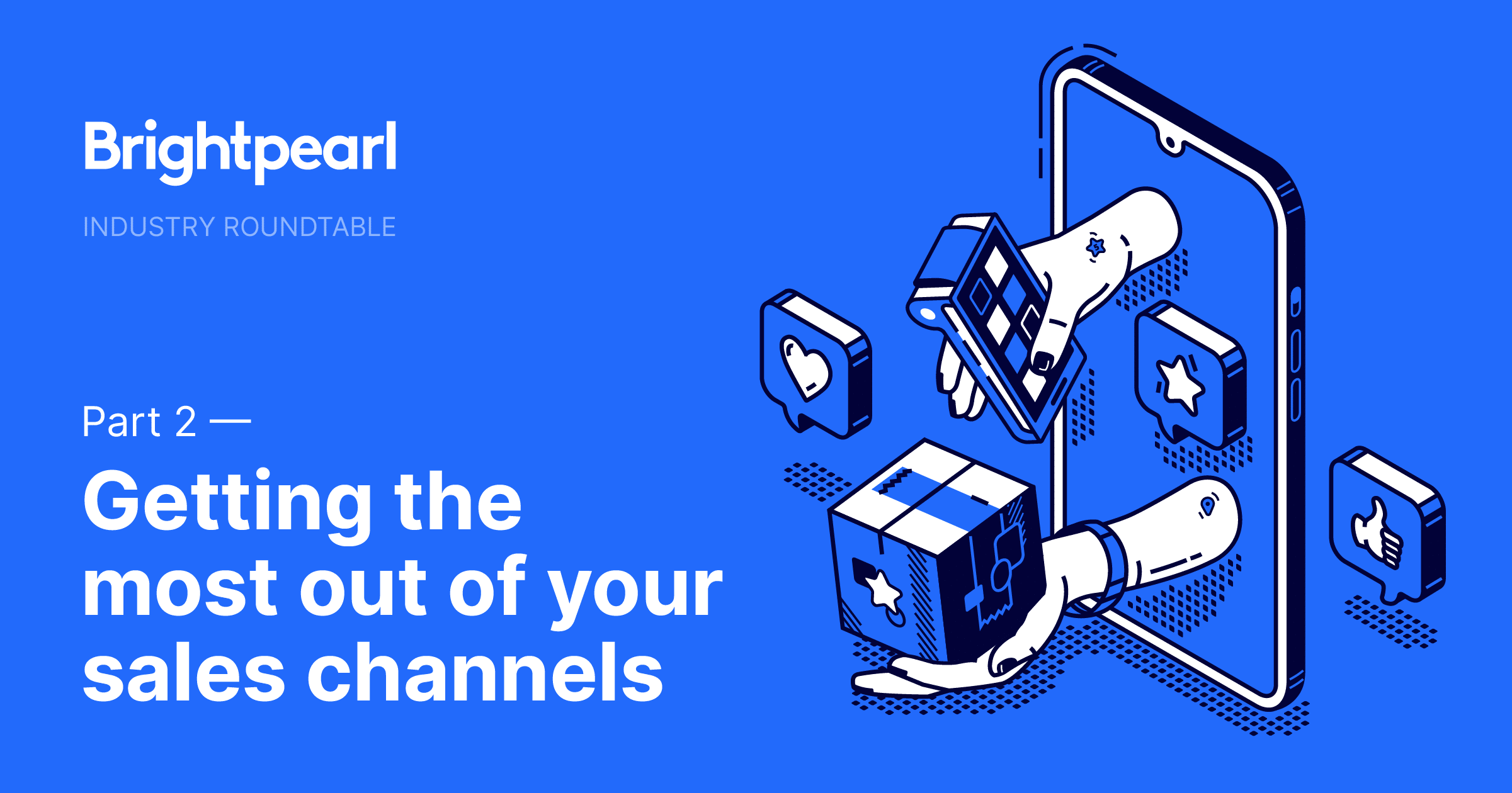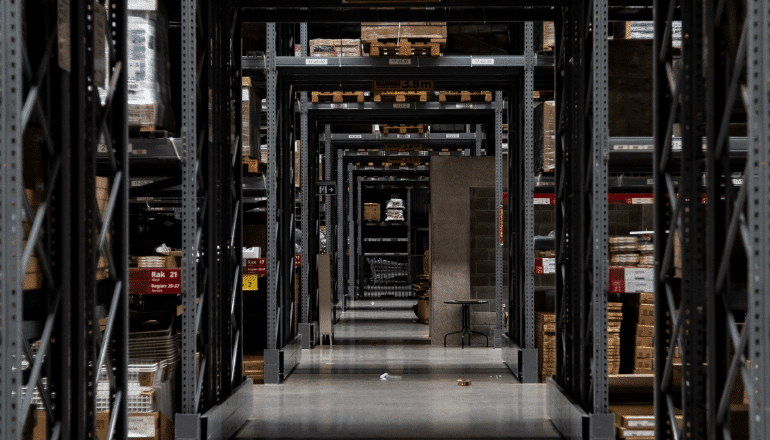Today, customers have so many options when it comes to purchasing from their favorite merchants.
Many people love to browse brick-and-mortar stores, but other shoppers may be buying from a website, a marketplace like Amazon, eBay, social media pages, and more.
But for the merchant, managing those channels while providing top-notch customer experience across each one can be a challenge. This is especially true in a post-pandemic world where some channels (like brick-and-mortar stores) may have been put on the back burner for more than a year due to lockdowns and restrictions. In fact, Brightpearl found that during the pandemic, 55% of consumers said they bought products online that they previously only bought in physical stores.
We asked a few of our partners some pressing questions about how merchants can get the most out of their sales channels in 2021. See their answers below.
How important is personalization in an online store? How can brands get creative on their sites?
“Whether customers know it or not, they want a tailored experience when shopping online. One way to provide that is by showing customers a product recommendation feed, which is a great way to increase average order value. It also increases the amount of time a customer spends on your store.
On top of that, leveraging personalization outside of your store through product feeds in email campaigns or providing customized messaging through support channels is another way to show your customers that you are there for them.”
– Jessica Grossman, Founder and CEO at In Social
“We find retailers that deliver personalized suggestions have significantly stronger conversion rates than those that don’t. But, what’s overlooked when people talk about ‘personalization’ is that you can personalize more customer touchpoints than most merchants realize, like returns. You know why a customer is sending something back. Even storing card info is a personalized experience that makes buying as smooth as possible. The key to personalization is truly understanding your customers and your product information. Match the right product with the right customer at the right time, and you’re doing it right.” – Darin Lynch, Founder and CEO at Irish Titan
What role does AI play in improving product suggestions, conversion rates, and personalization?
“AI plays a key role in understanding what your customers are actually looking for. By using machine learning and data on consumer behavior, you can get deep insights into your customer’s needs and wants. AI isn’t binary, though. To maximize cross-sell and up-sell opportunities, you can specify which products are displayed when certain search terms are used. In making intelligent product recommendations, your customers won’t feel like they’re being sold to — they’re going to feel like they’re being advised and that you truly understand them and what they’re looking for.” – Bruce Wright, VP of Sales at Pimberly
“Artificial Intelligence (AI) is hugely important when it comes to the online shopping experience, not only for the end customer but also the merchant themselves. If the merchant operates a large product catalog, trying to manually control product recommendations can be impossible. AI can learn what products are popular and what sells alongside other products and recommend these automatically. AI-driven product recs are really important on product pages when a customer comes from Google Shopping to show alternatives if they don’t like the product they clicked on. This technique can reduce bounce rates and improve conversion.” – Pete Robertshaw, Digital Commerce Consultant at Space48
What are some key product data metrics to look for when planning inventory across sales channels?
“The data collected from website customer experience, like search, navigation paths, and popular products, can also be deployed elsewhere in a retailer’s strategy, such as in SEO,
informing which products to purchase more of, marketing efforts, or in-store campaigns. It’s this birds-eye view of commerce that can turn online and offline experiences into conversion machines.” – Jussi Rousi, CCO at Klevu
“Having an understanding of your product classification is really important when looking to sell across multiple sales channels. You should know what products fall into a ‘Good,’ ‘Better,’ and ‘Best’ category. Then, identify where these products fit in your sales channels. For example, you might want to list your ‘Good’ products on eBay because customers there are after a lower price point, whereas your ‘Best’ products should be the focal point for your in-store range where average order value tends to be higher because customers can see and feel the products.” – Pete Robertshaw, Digital Commerce Consultant at Space48
“Look at your most popular products to see what’s selling. Then, look at either the season or particular months when the product is most popular. After that, analyze view metrics. Are some channels offering better shopping experiences than others for the same product? If so, maybe the way the product is displayed needs to be optimized so that it can sell out across every channel.” – Jessica Grossman, Founder and CEO at In Social
What are some product features and information that are most important to an online shopper?
“There are obvious things that are important, like good imagery and product descriptions, but we have found that relevancy is the real holy grail of e-commerce conversion. Shoppers are three to five times more likely to buy when they can find relevant products quickly, but more than 30% of online shoppers ‘bounce’ if they cannot find what they want quickly—representing $1 trillion in missed opportunity. The best way to personalize website experiences is by using the most relevant customer intent data to fuel your conversion engine.” – Jussi Rousi, CCO at Klevu
“Giving your customers complete confidence in their buying decision is key in converting them from browsers into buyers. Size, price, and descriptions aren’t enough to go on. Customer-generated content is a great way to make your products really resonate with your audience. Lifestyle shots, reviews, images, and videos will bring your products to life and enable your customers to form a personal bond with your brand. You also want to highlight information around your delivery and returns policy early on in the buyer journey. It can be a turn-off if this is only highlighted at checkout.” – Bruce Wright, VP of Sales at Pimberly
Are your channels optimized?
A multichannel channel strategy is essential for today’s retailers, but it’s also important to ensure the customer experience is consistent across each channel. If you get it right, you’ll see increased revenue and profit. If it sounds challenging, we can help. Brightpearl integrates all of your inventory, sales from different channels, purchases, warehouses, accounting, CRM, reporting, and POS in a single system. Whether you’re selling online, via phone, email, in a physical store, or any combination of those channels, Brightpearl automates processes so you can reallocate the right resources and focus on making your customers happier and your business more efficient. Get started here.




